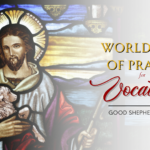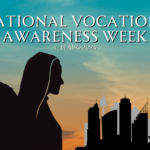Latest News
-
Fr Michael de Stoop: Biggest Bumper Crop in the Lord’s Harvest
By Fr Michael de Stoop - February 22, 2023 Reading Time: 10 minutes Seventeen men entered this year, the largest number in the history of the.
-
Super Seventeen enter Sydney Seminary
By Debbie Cramsie - February 22, 2023 Reading Time: 5 minutes Seminarians chat during a break at Good Shepherd Seminary in Homebush on 17 February. Photo: Alphonsus.
-
Sumner House: a vocations powerhouse of evangelisation
By Michael Kenny -September 11, 2021 | Reading Time: 4 minutes In a culture that pushes young men in particular not to commit to anything - or.
-
New priests will spark a ‘spiritual pandemic’
By Monica Doumit - September 21, 2020 The four new priests with Archbishop Anthony Fisher OP in the sacristy after the ordinations Mass, with the.
Events
April 2024
 World Day of Prayer for Vocations 2024
World Day of Prayer for Vocations 2024
August 2024
 National Vocations Awareness Week 2024
National Vocations Awareness Week 2024
September 2024
#WatchNow | Vocation Stories
Play Video
Play Video
